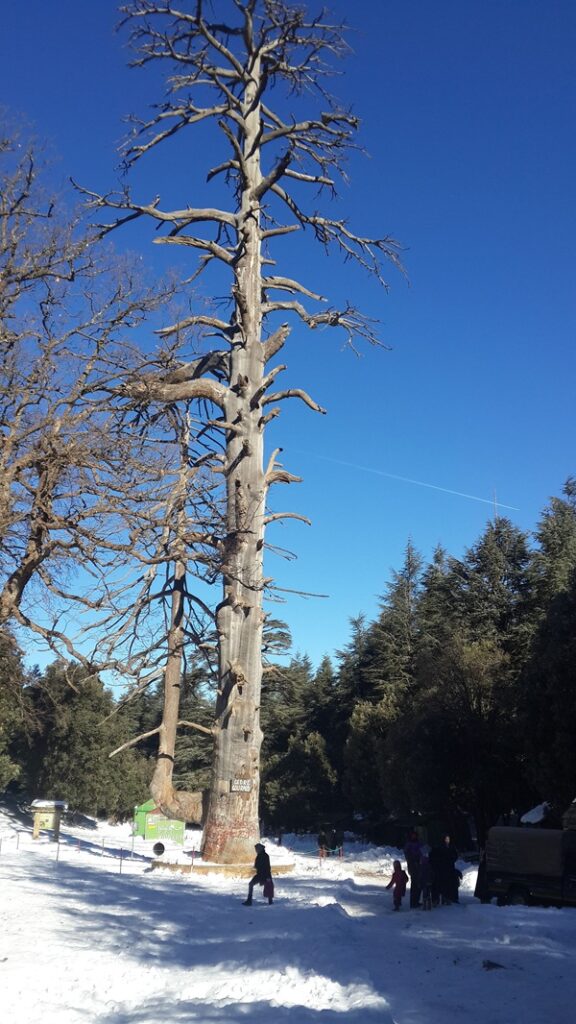Between Morocco and Lebanon: Cedars... One Tree, Two Different Stories

In the world of trees, there are species that are not just plants, but cultural and heritage symbols of nations and peoples. In the Mediterranean basin, two cedar trees, one in Morocco and the other in Lebanon, stand out as historical witnesses and natural treasures worthy of celebration. Although they belong to the same family, each has a different story and figures that reshape this narrative.
The numbers tell the story: Morocco's Atlantic rice
The Atlas cedar tree has existed in Morocco for millions of years. Its high-quality wood was used in the construction of palaces and mosques and in the manufacture of fine furniture during the Roman and Islamic eras. These forests have undergone periods of overexploitation, but conservation efforts have kept them an essential part of the Moroccan landscape.
Thus, Morocco is home to the largest forests. Atlantic rice At the regional level. The area planted with these trees is estimated at approximately 134 thousand hectaresThis vast area is equivalent to the area of several cities combined, making Morocco an environmental powerhouse in this field. As for the number of trees, although there are no precise statistics, estimates indicate that there are between 13 and 27 million cedar trees, which shows the density of these forests and their environmental importance in the Middle Atlas Mountains.

Among these millions, one tree stands out, called Guru tree“The cedar tree, an icon of these forests, was named after its discoverer, General Henri Gouraud, who discovered it during the French occupation of the region. This tree is not just a statistical number; it is the oldest cedar tree in Africa, estimated to be more than 800 years, and a height of 45 meters These forests are considered the lungs of Morocco, purifying the air, preserving biodiversity, and providing a habitat for the Barbary macaque. These numbers give the tree a special status as a silent witness to the region's history.
Lebanese cedar: a symbol of immortality
On the other side of the Mediterranean, stands Lebanese rice Towering, not only in its vast area, but also in its history and symbolism. The total area of cedar forests in Lebanon does not exceed 600 hectares, a modest area compared to Morocco. However, these small forests hold tremendous value.
Lebanese cedar is concentrated in three areas (reserves), the most important of which are:
- Shouf Cedar Nature ReserveIt is the largest nature reserve in Lebanon, covering a large area of the Chouf Mountains.
- Tannourine Cedar Nature ReserveIts area is about: 600 hectaresIt contains about 1.5 million cedar trees.
- Cedar Forest of the LordIt is located in the Bsharri region and is famous for its ancient trees, some of which date back thousands of years.
The importance of Lebanese cedar is concentrated in: Forest of the Cedars of the Lord“...which includes the oldest cedar trees in the world, estimated to be thousands of years old. These trees, numbering in the millions, are part of Lebanon's identity and history. The Phoenicians used their wood to build their ships, and they have a place on the Lebanese flag as a symbol of strength and immortality.
Differences between Atlas and Lebanese cedars
There are clear differences between Atlantic cedar (Cedrus atlantica) and Lebanon cedar (Cedrus libani):
* Geographical area: The Atlantic cedar is found in North Africa, while the Lebanese cedar is found in the Middle East.
* Appearance: The crown of the Cedar of Lebanon is flattened with age, unlike the Atlas Cedar.
* Leaf color: The leaves of the Atlas cedar tend to be bluish-green, while the leaves of the Lebanon cedar are dark green.
* Resistance: Atlantic cedar is more resistant to drought and harsh conditions.
The gist of the story
In the end, it can be said that the comparison between Moroccan and Lebanese rice is not a comparison of superiority, but rather a comparison of PrivacyMorocco offers cedars in their environmental and quantitative dimensions, with its forests covering vast areas that contribute to the regional ecological balance. Lebanon, on the other hand, offers cedars in their historical and symbolic dimensions, with its few trees possessing invaluable historical and spiritual value and embodying an eternal national symbol. Both are natural treasures, but with different stories and figures.





